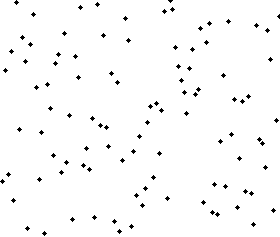Sorting algorithm
Sorting algorithm refers to a method or a computer algorithm designed to arrange the elements of a list in a certain order. The most common orders are numerical and lexicographical. Sorting algorithms have vast applications in computer science for organizing data so that it can be accessed more efficiently. The choice of a sorting algorithm depends on the analysis of its time complexity, space complexity, and stability.
Types of Sorting Algorithms[edit | edit source]
Sorting algorithms can be classified into various types based on their mechanism and strategy. Some of the most commonly used sorting algorithms include:
- Bubble Sort: A simple comparison-based algorithm that repeatedly steps through the list, compares adjacent elements, and swaps them if they are in the wrong order. Its average and worst-case time complexity are both O(n^2), where n is the number of items being sorted.
- Selection Sort: This algorithm divides the input list into two parts: a sorted sublist of items which is built up from left to right at the front (left) of the list, and a sublist of the remaining unsorted items. The worst-case time complexity is O(n^2).
- Insertion Sort: It builds the final sorted array one item at a time. It is much less efficient on large lists than more advanced algorithms such as quicksort, heapsort, or merge sort. However, insertion sort provides several advantages, such as simple implementation and efficient for (small) data sets. Its average and worst-case time complexity is O(n^2).
- Merge Sort: An efficient, stable, comparison-based, divide and conquer algorithm. Most implementations produce a stable sort, meaning that the implementation preserves the input order of equal elements in the sorted output. It has a worst-case time complexity of O(n log n).
- Quicksort: A divide and conquer algorithm. Quicksort first divides a large array into two smaller sub-arrays: the low elements and the high elements. Quicksort can then recursively sort the sub-arrays. The average and worst-case time complexities are O(n log n) and O(n^2), respectively.
- Heapsort: A comparison-based sorting algorithm. Heapsort can be thought of as an improved selection sort: like selection sort, heapsort divides its input into a sorted and an unsorted region, and it iteratively shrinks the unsorted region by extracting the largest element and moving that to the sorted region. The time complexity of heapsort is O(n log n).
Comparison and Choice[edit | edit source]
The choice of sorting algorithm can depend on several factors:
- The size of the data set: For small datasets, algorithms like insertion sort might be more efficient despite their O(n^2) complexity due to lower overhead. For larger datasets, algorithms with O(n log n) complexity are preferred.
- The nature of the data: If the data is already somewhat sorted, algorithms like insertion sort can perform significantly faster.
- Memory usage: Some algorithms, like merge sort, require additional space for their operations.
- Stability: If the relative order of equal elements needs to be preserved, stable sorting algorithms like merge sort are preferred.
Applications[edit | edit source]
Sorting algorithms are used in a wide range of applications, from organizing files on a computer to data retrieval and search algorithms. They are fundamental in database algorithms, search engines, and the efficient operation of large data-processing systems.
See Also[edit | edit source]
This article is a algorithms or data structures-related stub. You can help WikiMD by expanding it!
Search WikiMD
Ad.Tired of being Overweight? Try W8MD's physician weight loss program.
Semaglutide (Ozempic / Wegovy and Tirzepatide (Mounjaro / Zepbound) available.
Advertise on WikiMD
|
WikiMD's Wellness Encyclopedia |
| Let Food Be Thy Medicine Medicine Thy Food - Hippocrates |
Translate this page: - East Asian
中文,
日本,
한국어,
South Asian
हिन्दी,
தமிழ்,
తెలుగు,
Urdu,
ಕನ್ನಡ,
Southeast Asian
Indonesian,
Vietnamese,
Thai,
မြန်မာဘာသာ,
বাংলা
European
español,
Deutsch,
français,
Greek,
português do Brasil,
polski,
română,
русский,
Nederlands,
norsk,
svenska,
suomi,
Italian
Middle Eastern & African
عربى,
Turkish,
Persian,
Hebrew,
Afrikaans,
isiZulu,
Kiswahili,
Other
Bulgarian,
Hungarian,
Czech,
Swedish,
മലയാളം,
मराठी,
ਪੰਜਾਬੀ,
ગુજરાતી,
Portuguese,
Ukrainian
Medical Disclaimer: WikiMD is not a substitute for professional medical advice. The information on WikiMD is provided as an information resource only, may be incorrect, outdated or misleading, and is not to be used or relied on for any diagnostic or treatment purposes. Please consult your health care provider before making any healthcare decisions or for guidance about a specific medical condition. WikiMD expressly disclaims responsibility, and shall have no liability, for any damages, loss, injury, or liability whatsoever suffered as a result of your reliance on the information contained in this site. By visiting this site you agree to the foregoing terms and conditions, which may from time to time be changed or supplemented by WikiMD. If you do not agree to the foregoing terms and conditions, you should not enter or use this site. See full disclaimer.
Credits:Most images are courtesy of Wikimedia commons, and templates, categories Wikipedia, licensed under CC BY SA or similar.
Contributors: Prab R. Tumpati, MD





